 8 Dangers of Delaying Knee Replacement Surgery | Knee replacement, Knee replacement surgery, Knee replacement recovery
8 Dangers of Delaying Knee Replacement Surgery | Knee replacement, Knee replacement surgery, Knee replacement recoveryWhatsApp Appointment Orchard Ninth Telephone Orchard Ninth Medical Specialties Learn more about coronavirus, COVID-19 tests and vaccine development. Advanced surgery Procedures General facilities Specialization areas Diagnosis " Auxiliary servicesApplications Medical specialtiesCOVID-19Advanced surgical procedures General facilities Specialization areas Diagnosis & auxiliary services Search Orthopedic health Difficult times remind us of how important it is to be prepared. As well as identifying and treating our early health problems is vital for quick and smooth recovery. Pain can occur when we least expect it, and for several reasons. The important thing is to identify the cause of pain and seek early treatment. At Mount Elizabeth Hospitals, our team of specialized orthopaedic surgeons, physical therapists and occupational therapists work together to diagnose and treat their condition. Any injury should not be taken slightly. Take a step towards managing your health, relieve any symptoms and recover your life. The quality of life of tomorrow can be decided today. Make an appointment with an orthopedic specialist. The spine is vital for body structure and physical function. Any spinal injury could leads to serious consequences. . Foot and ankle injuries are common, especially among older adults and athletes. In certain cases, surgical intervention may be required to prevent long-term consequences. . Common causes of hand injuries include impact during sports, wear aging and accident Cae. Certain injuries can lead to severe conditions that can affect the hand function for a long time Run. . Knee injuries can be caused by sports or recreational activities, accidental falls and aging wear and tears. Certain knee injuries may cause long-term consequences if not treated promptly. . Shoulder injuries are generally sustained due to aging, or during sporting activities that require repetitive and excessive movement of top like tennis, badminton, swimming and weighing. . Sports injuries are injuries that most commonly occur during sports or exercise. Sports injuries can be the result of accidents, excess muscle work or joints, improper equipment, lack conditioning or insufficient heating. What sports injury is most likely to have? Find out what some common injuries are related to your sport you should take care of. What sport do you play? The previous cross ligament is one of the main stabilizer ligaments in the knee. An earlier cross ligament injury is a tear to the previous cruciate ligament. The lesions to the previous cross ligament are common among people that play sports that have start movements, swinging or sudden changes in the direction. These sports include football, basketball, tennis, dance and Skiing. Symptoms include a wave sound when the ligament breakup, difficulty with knee movement, feeling of instability, with the "action road" of the knee during daily activities, pain immediately after injury, inflammation of the affected knee within 4 – 12 hours, or walking with a painful limp. If you experience any of these symptoms, see your orthopedic specialist. Your doctor will recommend treatment options that best fit your lifestyle needs. Learn more about the and available. A fracture is a broken bone that occurs when physical strength exercised in the bone is stronger than the bone itself. Fractures may occur in Any age. Certain conditions such as osteoporosis that commonly affect Older people can lead to fragile bones, increasing the risk of bone fracture. Symptoms of bone fracture include pain, swelling, bruising, loss of function and bone deformity in the injured area. If you experience any of these symptoms, see your orthopedic specialist. Your doctor will recommend treatment options that best fit your lifestyle needs. Learn more about the and available. Plant fasciitis (pronounced fash-ee-eye-tus) is an inflammation of the muscle band (called planting fascia) under the foot that supports The bow. Planting fasciitis is the most common cause of heel pain. It can occur on one or both feet. Planting fasciitis is caused by strain to the muscle of the low planting fascia the foot. The cause could be degenerative or might be from an earlier injury. It may occur if you wear poor shoes, for example shoes with shoes the thin soles or which are not solid enough. Other causes include: Middle-aged people are the most affected. Common symptoms of planting fasciitis include 'first step pain', which is pain that occurs when taking the first steps to wake up in the morning, or inflammation observed in the foot area. If you experience any of these symptoms, see your orthopedic specialist. Your doctor will recommend treatment options that best fit your lifestyle needs. Learn more about the and available. A spine is an inflammation of the muscles, tendons and bone tissue around the inner edge of the leg bone (tibia). They are often associated with running or walking for long periods of time. In general, the shin splints develop when muscle and bone tissue in the leg become overloaded. Common symptoms of a spinilla spine include acute or boring pain and agitator along the boundary of warmth, swelling, pain that occurs both during and after the exercise, and the pain that worsened when he touched the area. If you experience any of these symptoms, see your orthopedic specialist. Your doctor will recommend treatment options that best fit your lifestyle needs. Learn more about the and available. A sprain occurs as a result of stress to ligaments or joints. That's it. one of the most common injuries related to sport. In addition to playing sports, an uncomfortable step, walking or sliding on a wet surface can also cause this common injury. When a ankle is sprained, ligaments, which are tissues that stabilize the joint, are partially or completely torn. Although these ligaments have the ability to heal well, there is a greater risk of repeated sprains in the future. One of the risk factors of a sguished ankle is having ankle instability. The most serious cases require a prolonged bra and possibility of surgery to repair ligaments. Prolonged pain of a ankle sprain should be assessed by a . MRI scans will be very useful to exclude an osteochondral lesion. The carpal tunnel is a tunnel in the wrist. Nine tendons and half nerve Go through the tunnel. When the pressure accumulates in the tunnel, the nerve it was compressed and it cannot work properly. This can lead to numbness, discomfort and pain in your fingers. Carpal tunnel syndrome can be caused for a fractured previous wrist that has caused the narrowing of the carpal tunnel, inflammatory conditions such as rheumatoid arthritis and associated conditions like diabetes mellitus or hormonal disorders. Symptoms usually include pain, numbness, and tingling in the hand and fingers, and a weak grip while performing simple tasks such as keeping the phone or reading the paper. If you experience any of these symptoms, see your orthopedic specialist. Your doctor will recommend treatment options that best fit your lifestyle needs. Learn more about the and available. De Quervain tenosynovitis is an inflammation of the tendon pod on the base of the thumb. The tendons that move the thumb constrain in a tight tunnel. The inflammation comes from the friction created as the tendon slides along the thumb with repeated movements. The usual cause of De Quervain tenosynovitis is excessive use of the wrist. Nursing mothers are often affected during the time they care about their Infante. Common symptoms include pain in the joint of the wrist near the base of the thumb, pain after increased activity involving the wrist and hand, pain that begins like a sensation of pain to a sharp pain, and swelling. If you experience any of these symptoms, see your orthopedic specialist. Your doctor will recommend treatment options that best fit your lifestyle needs. Learn more about the and available. The rotary cuff is the network of 4 muscles and several tendons that form a covering around the top of the upper arm bone. The rotating cuff holds the upper arm bone in place and allows the arm to rotate. Cuff rotator injury and swelling is one of the most common causes of the shoulder pain. There are 3 common types of rotating cuff injuries: Rotating fist tendonitis is caused by irritation and inflammation of tendons of the rotating cuff muscles. This may be due to injury or excessive use from the shoulder. It can occur in athletes participating in the launch sports or non-atletas with a recent history of heavy lifting or activities involving repetitive movements of the shoulder. Symptoms include generalized shoulder pain, or pain that gets worse with overload activities or night. In rotating cuff imping syndrome, rotating cuff tendon is trapped and the tendon is torn repeatedly against the shoulder blade, leading a fraying of the tendon. Symptoms include chronic pain that gets worse at night or with general activities. Tears of rotor cuff are tears in the rotary cuff tendon instead of in the muscles. Rotary cuff tears usually happen as a result of a fall or an accident in young people. In older people, they are usually caused by rotating cuff impingment syndrome. Symptoms include pain and weakness. If you experience any of these symptoms, see your orthopedic specialist. Your doctor will recommend treatment options that best fit your lifestyle needs. Learn more about the and available. Patellar tendonitis is an injury to the tendon that connects the cap to the knee Your bed bone. The patellar tendon helps the muscles extend their lower leg so you can kick a ball, pedal your bike and jump on air. Paellar tendonitis is usually caused by excessive use of the patellar tendon. People who play sports with a lot of squatting and leap movements are Most at risk. Another cause is the abnormal alignment of the lower limbs, Like flat feet. These altered postures change the angle between the quadruple muscle and the patellar tendon. Increased tension in tendon can occur during growth impulses, such that tendon cannot keep up with the growth of the lower leg. In this situation, the tendon becomes too short, which makes me throw at the bottom end of the Knee hat. This condition is known as Sinding-Larsen-Johansson disorder. Symptoms of patellar tendonitis include pain and tenderness just below rice, swelling and pain when kneeling. If you experience any of these symptoms, see your orthopedic specialist. Your doctor will recommend treatment options that best fit your lifestyle needs. Learn more about the and available. A sprain occurs as a result of stress to ligaments or joints. That's it. one of the most common injuries related to sport. In addition to playing sports, an uncomfortable step, walking or sliding on a wet surface can also cause this common injury. When a ankle is sprained, ligaments, which are tissues that stabilize the joint, are partially or completely torn. Although these ligaments have the ability to heal well, there is a greater risk of repeated sprains in the future. One of the risk factors of a sguished ankle is having ankle instability. The most serious cases require a prolonged bra and possibility of surgery to repair ligaments. Prolonged pain of a ankle sprain should be assessed by a . MRI scans will be very useful to exclude an osteochondral lesion. The tennis elbow is a common condition that is usually caused by excess or repetitive twist or lifting of elbow. Repetitive motion strains muscles and tendons attached to the elbow, leading to small tears and inflammation near the bony lump (bilateral epicondyle) on the outside part of the elbow. Common symptoms include pain in the outer side of the elbow, pain in folding or lift your arm, write or grab objects, accompanied pain stiffness over the full arm extension, sensitivity or swelling. If you experience any of these symptoms, see your orthopedic specialist. Your doctor will recommend treatment options that best fit your lifestyle needs. Learn more about the and available. The carpal tunnel is a tunnel in the wrist. Nine tendons and half nerve Go through the tunnel. When the pressure accumulates in the tunnel, the nerve it was compressed and it cannot work properly. This can lead to numbness, discomfort and pain in your fingers. Carpal tunnel syndrome can be caused for a fractured previous wrist that has caused the narrowing of the carpal tunnel, inflammatory conditions such as rheumatoid arthritis and associated conditions like diabetes mellitus or hormonal disorders. Symptoms usually include pain, numbness, and tingling in the hand and fingers, and a weak grip while performing simple tasks such as keeping the phone or reading the paper. If you experience any of these symptoms, see your orthopedic specialist. Your doctor will recommend treatment options that best fit your lifestyle needs. Learn more about the and available. De Quervain tenosynovitis is an inflammation of the tendon pod on the base of the thumb. The tendons that move the thumb constrain in a tight tunnel. The inflammation comes from the friction created as the tendon slides along the thumb with repeated movements. The usual cause of De Quervain tenosynovitis is excessive use of the wrist. Nursing mothers are often affected during the time they care about their Infante. Common symptoms include pain in the joint of the wrist near the base of the thumb, pain after increased activity involving the wrist and hand, pain that begins like a sensation of pain to a sharp pain, and swelling. If you experience any of these symptoms, see your orthopedic specialist. Your doctor will recommend treatment options that best fit your lifestyle needs. Learn more about the and available. The rotary cuff is the network of 4 muscles and several tendons that form a covering around the top of the upper arm bone. The rotating cuff holds the upper arm bone in place and allows the arm to rotate. Cuff rotator injury and swelling is one of the most common causes of the shoulder pain. There are 3 common types of rotating cuff injuries: Rotating fist tendonitis is caused by irritation and inflammation of tendons of the rotating cuff muscles. This may be due to injury or excessive use from the shoulder. It can occur in athletes participating in the launch sports or non-atletas with a recent history of heavy lifting or activities involving repetitive movements of the shoulder. Symptoms include generalized shoulder pain, or pain that gets worse with overload activities or night. In rotating cuff imping syndrome, rotating cuff tendon is trapped and the tendon is torn repeatedly against the shoulder blade, leading a fraying of the tendon. Symptoms include chronic pain that gets worse at night or with general activities. Tears of rotor cuff are tears in the rotary cuff tendon instead of in the muscles. Rotary cuff tears usually happen as a result of a fall or an accident in young people. In older people, they are usually caused by rotating cuff impingment syndrome. Symptoms include pain and weakness. If you experience any of these symptoms, see your orthopedic specialist. Your doctor will recommend treatment options that best fit your lifestyle needs. Learn more about the and available. Patellar tendonitis is an injury to the tendon that connects the cap to the knee Your bed bone. The patellar tendon helps the muscles extend their lower leg so you can kick a ball, pedal your bike and jump on air. Paellar tendonitis is usually caused by excessive use of the patellar tendon. People who play sports with a lot of squatting and leap movements are Most at risk. Another cause is the abnormal alignment of the lower limbs, Like flat feet. These altered postures change the angle between the quadruple muscle and the patellar tendon. Increased tension in tendon can occur during growth impulses, such that tendon cannot keep up with the growth of the lower leg. In this situation, the tendon becomes too short, which makes me throw at the bottom end of the Knee hat. This condition is known as Sinding-Larsen-Johansson disorder. Symptoms of patellar tendonitis include pain and tenderness just below rice, swelling and pain when kneeling. If you experience any of these symptoms, see your orthopedic specialist. Your doctor will recommend treatment options that best fit your lifestyle needs. Learn more about the and available. A sprain occurs as a result of stress to ligaments or joints. That's it. one of the most common injuries related to sport. In addition to playing sports, an uncomfortable step, walking or sliding on a wet surface can also cause this common injury. When a ankle is sprained, ligaments, which are tissues that stabilize the joint, are partially or completely torn. Although these ligaments have the ability to heal well, there is a greater risk of repeated sprains in the future. One of the risk factors of a sguished ankle is having ankle instability. The most serious cases require a prolonged bra and possibility of surgery to repair ligaments. Prolonged pain of a ankle sprain should be assessed by a . MRI scans will be very useful to exclude an osteochondral lesion. The tennis elbow is a common condition that is usually caused by excess or repetitive twist or lifting of elbow. Repetitive motion strains muscles and tendons attached to the elbow, leading to small tears and inflammation near the bony lump (bilateral epicondyle) on the outside part of the elbow. Common symptoms include pain in the outer side of the elbow, pain in folding or lift your arm, write or grab objects, accompanied pain stiffness over the full arm extension, sensitivity or swelling. If you experience any of these symptoms, see your orthopedic specialist. Your doctor will recommend treatment options that best fit your lifestyle needs. Learn more about the and available. Achilles tendon is the large tendon at the back of the ankle that connects the calf muscles to the heel bone. These muscles are essential for walking, running and jumping. Achilles tendon resists a lot of stress during normal daily life. Achilles tendonitis occurs when muscles and The tendon is overused, causing irritation and swelling of the tendon. There are 2 types of Achilles tendonitis: Hardening (qualification) of damaged tendon fibers can occur in both types of Achilles tendonitis. Achilles tendonitis is usually caused by ongoing stress in the affected area, repetitive movements during sports or recreational activities like running, jumping, or even a sudden change of intensity activity. Poor stretching or conditioning before exercising or playing sports also increases the risk. Other conditions, such as You can also irritate the Achilles tendon. Common symptoms of Achilles tendonitis include pain or swelling at the back of the heel, inability to bend the ankle, discomfort when walking, swelling calf, joint deformity, ankle pain, as well as signs of infection such as fever, redness or heat. If you experience any of these symptoms, see your orthopedic specialist. Your doctor will recommend treatment options that best fit your lifestyle needs. Learn more about the and available. The anterior knee pain is inflammation of the lower part of the kneecap (patella). It often affects young people who play sports and older people who work too hard His knees. The previous knee pain may be due to injury or trauma to the (such as a dislocation or fracture), excessive use with repetitiveness stress placed in the joint of the knee (long long distance running or jumping sports), or when muscles around the hip and knee weaken. Common symptoms include pain in the front of the kneecap, which can be aggravated by kneeling, asphalting, running, sitting and walking up and down the stairs. If you experience any of these symptoms, see your orthopedic specialist. Your doctor will recommend treatment options that best fit your lifestyle needs. Learn more about the and available. The previous cross ligament is one of the main stabilizing ligaments in knee. A previous cross ligament injury is a tear to the previous Cross ligament. Previous cross ligament injuries are common among people who play sports that have start movements, pivoting or sudden changes in the direction. These sports include soccer, handball, tennis, dancing and skiing. Symptoms include a wave sound when the ligament breaks, difficulty with knee movement, feeling of instability, with the way to kneel ' during daily activities, pain immediately after injury, inflammation of the the affected knee within 4 – 12 hours, or walking with a painful limp. If you experience any of these symptoms, see your orthopedic specialist. Your doctor will recommend treatment options that best fit your lifestyle needs. Learn more about the and available. A fracture is a broken bone that occurs when physical strength exercised in the bone is stronger than the bone itself. Fractures may occur in Any age. Certain conditions such as osteoporosis that commonly affect Older people can lead to fragile bones, increasing the risk of bone fracture. Symptoms of bone fracture include pain, swelling, bruising, loss of function and bone deformity in the injured area. If you experience any of these symptoms, see your orthopedic specialist. Your doctor will recommend treatment options that best fit your lifestyle needs. Learn more about the and available. A menisco tear occurs when one of the cartilage parts on the knee is wounded and tears. Meniscus is a small C-shaped cartilage that acts like a cushion in the knee joint. A meniscus tear occurs during movements that rotates the knee forcefully while the foot is firmly planted, can occur during contact sports such as basketball or football. Symptoms of a menisco tear include clicking or jumping sounds during movement, limited range of movement, a feeling of blockage (inability to straighten knee), pain on both sides of the knee, swelling on the joint line are or tender along the joint line. If you experience any of these symptoms, see your orthopedic specialist. Your doctor will recommend treatment options that best fit your lifestyle needs. Learn more about the and available. Patellar tendonitis is an injury to the tendon that connects the cap to the knee Your bed bone. The patellar tendon helps the muscles extend their lower leg so you can kick a ball, pedal your bike and jump on air. Paellar tendonitis is usually caused by excessive use of the patellar tendon. People who play sports with a lot of squatting and leap movements are Most at risk. Another cause is the abnormal alignment of the lower limbs, Like flat feet. These altered postures change the angle between the quadruple muscle and the patellar tendon. Increased tension in tendon can occur during growth impulses, such that tendon cannot keep up with the growth of the lower leg. In this situation, the tendon becomes too short, which makes me throw at the bottom end of the Knee hat. This condition is known as Sinding-Larsen-Johansson disorder. Symptoms of patellar tendonitis include pain and tenderness just below rice, swelling and pain when kneeling. If you experience any of these symptoms, see your orthopedic specialist. Your doctor will recommend treatment options that best fit your lifestyle needs. Learn more about the and available. A sprain occurs as a result of stress to ligaments or joints. That's it. one of the most common injuries related to sport. In addition to playing sports, an uncomfortable step, walking or sliding on a wet surface can also cause this common injury. When a ankle is sprained, ligaments, which are tissues that stabilize the joint, are partially or completely torn. Although these ligaments have the ability to heal well, there is a greater risk of repeated sprains in the future. One of the risk factors of a sguished ankle is having ankle instability. The most serious cases require a prolonged bra and possibility of surgery to repair ligaments. Prolonged pain of a ankle sprain should be assessed by a . MRI scans will be very useful to exclude an osteochondral lesion. Achilles tendon is the large tendon at the back of the ankle that connects the calf muscles to the heel bone. These muscles are essential for walking, running and jumping. Achilles tendon resists a lot of stress during normal daily life. Achilles tendonitis occurs when muscles and The tendon is overused, causing irritation and swelling of the tendon. There are 2 types of Achilles tendonitis: Hardening (qualification) of damaged tendon fibers can occur in both types of Achilles tendonitis. Achilles tendonitis is usually caused by ongoing stress in the affected area, repetitive movements during sports or recreational activities like running, jumping, or even a sudden change of intensity activity. Poor stretching or conditioning before exercising or playing sports also increases the risk. Other conditions, such as You can also irritate the Achilles tendon. Common symptoms of Achilles tendonitis include pain or swelling at the back of the heel, inability to bend the ankle, discomfort when walking, swelling calf, joint deformity, ankle pain, as well as signs of infection such as fever, redness or heat. If you experience any of these symptoms, see your orthopedic specialist. Your doctor will recommend treatment options that best fit your lifestyle needs. Learn more about the and available. The anterior knee pain is inflammation of the lower part of the kneecap (patella). It often affects young people who play sports and older people who work too hard His knees. The previous knee pain may be due to injury or trauma to the (such as a dislocation or fracture), excessive use with repetitiveness stress placed in the joint of the knee (long long distance running or jumping sports), or when muscles around the hip and knee weaken. Common symptoms include pain in the front of the kneecap, which can be aggravated by kneeling, asphalting, running, sitting and walking up and down the stairs. If you experience any of these symptoms, see your orthopedic specialist. Your doctor will recommend treatment options that best fit your lifestyle needs. Learn more about the and available. A spine is an inflammation of the muscles, tendons and bone tissue around the inner edge of the leg bone (tibia). They are often associated with running or walking for long periods of time. In general, the shin splints develop when muscle and bone tissue in the leg become overloaded. Common symptoms of a spinilla spine include acute or boring pain and agitator along the boundary of warmth, swelling, pain that occurs both during and after the exercise, and the pain that worsened when he touched the area. If you experience any of these symptoms, see your orthopedic specialist. Your doctor will recommend treatment options that best fit your lifestyle needs. Learn more about the and available. Plant fasciitis (pronounced fash-ee-eye-tus) is an inflammation of the muscle band (called planting fascia) under the foot that supports The bow. Planting fasciitis is the most common cause of heel pain. It can occur on one or both feet. Planting fasciitis is caused by strain to the planting muscle the foot. The cause could be degenerative or might be from an earlier injury. It may occur if you wear poor shoes, for example shoes with shoes the thin soles or which are not solid enough. Other causes include: Middle-aged people are the most affected. Common symptoms of Plant Fasciitis include 'first step pain', which is pain that occurs when taking the first steps to wake up in the morning, or inflammation observed in the foot area. If you experience any of these symptoms, see your orthopedic specialist. Your doctor will recommend treatment options that best fit your lifestyle needs. Learn more about the and available. A sprain occurs as a result of stress to ligaments or joints. That's it. one of the most common injuries related to sport. In addition to playing sports, an uncomfortable step, walking or sliding on a wet surface can also cause this common injury. When a ankle is sprained, ligaments, which are tissues that stabilize the joint, are partially or completely torn. Although these ligaments have the ability to heal well, there is a greater risk of repeated sprains in the future. One of the risk factors of a sguished ankle is having ankle instability. The most serious cases require a prolonged bra and possibility of surgery to repair ligaments. Prolonged pain of a ankle sprain should be assessed by a . MRI scans will be very useful to exclude an osteochondral lesion. The anterior knee pain is inflammation of the lower part of the kneecap (patella). It often affects young people who play sports and older people who work too hard His knees. The anterior knee pain may be due to injury or trauma to the kneecap (such as dislocation or fracture), excessive use with repetitive stress placed in the knee joint (long long distance running or jumping sports), or when the muscles around the hip and knee weaken. Common symptoms include pain in the front of the kneecap, which can be aggravated by kneeling, escape, running, sitting and walking up and down the stairs. If you experience any of these symptoms, see your orthopedic specialist. Your doctor will recommend treatment options that best fit your lifestyle needs. Learn more about the and available. The previous cross ligament is one of the main stabilizing ligaments in knee. A previous cross ligament injury is a tear to the previous Cross ligament. Previous cross ligament injuries are common among people who play sports that have start movements, pivoting or sudden changes in the direction. These sports include soccer, handball, tennis, dancing and skiing. Symptoms include a wave sound when the ligament breaks, difficulty with knee movement, feeling of instability, with the way to kneel ' during daily activities, pain immediately after injury, inflammation of the the affected knee within 4 – 12 hours, or walking with a painful limp. If you experience any of these symptoms, see your orthopedic specialist. Your doctor will recommend treatment options that best fit your lifestyle needs. Learn more about the and available. The carpal tunnel is a tunnel in the wrist. Nine tendons and the median The nerve passes through the tunnel. When the pressure builds up in the tunnel, nerve is compressed and cannot function properly. This can result in numbness, discomfort and pain in the fingers. carpal tunnel syndrome can be caused by a previous wrist fracture that has caused narrowing carpal tunnel, inflammatory conditions such as rheumatoid arthritis and associated conditions such as diabetes mellitus or hormonal disorders. Symptoms usually include pain, numbness, and tingling in the hand and fingers, and a weak grip while performing simple tasks like keeping the phone or read the paper. If you experience any of these symptoms, see your orthopedic specialist. Your doctor will recommend treatment options that best fit your lifestyle needs. Learn more about the and available. De Quervain tenosynovitis is an inflammation of the tendon pod on the base of the thumb. The tendons that move the thumb constrain in a tight tunnel. The inflammation comes from the friction created as the tendon slides along the thumb with repeated movements. The usual cause of De Quervain tenosynovitis is excessive use of the wrist. Nursing mothers are often affected during the time they care about their Infante. Common symptoms include pain in the joint of the wrist near the base of the thumb, pain after increased activity involving the wrist and hand, pain that begins like a sensation of pain to a sharp pain, and swelling. If you experience any of these symptoms, see your orthopedic specialist. Your doctor will recommend treatment options that best fit your lifestyle needs. Learn more about the and available. The lower back pain is one of the most common conditions related to spinal health. It often results from gradual injury to the lower back muscles due to to poor posture, inadequate lifting techniques or chronic overuse. Daily activities can also lead to micro trauma in the spine and hinder smooth motion and function. As a result, there is pain, limitation of movement and degeneration. Signs and symptoms include back pain, referred pain, or altered sensation in feet, pain in weight, pain during cough or sneezing, muscle spasms and limitation in motion. Treatment varies according to in the clinical condition and severity of the injury. If you experience any of these symptoms, see your orthopedic specialist. Your doctor will recommend that best suits your lifestyle needs. Learn more about treatment options and available. The rotary cuff is the network of 4 muscles and several tendons that form a covering around the top of the upper arm bone. The rotating cuff holds the upper arm bone in place and allows the arm to rotate. Cuff rotator injury and swelling is one of the most common causes of the shoulder pain. There are 3 common types of rotating cuff injuries: Rotating fist tendonitis is caused by irritation and inflammation of tendons of the rotating cuff muscles. This may be due to injury or excessive use from the shoulder. It can occur in athletes participating in the launch sports or non-atletas with a recent history of heavy lifting or activities involving repetitive movements of the shoulder. Symptoms include generalized shoulder pain, or pain that gets worse with overload activities or night. In rotating cuff imping syndrome, rotating cuff tendon is trapped and the tendon is torn repeatedly against the shoulder blade, leading a fraying of the tendon. Symptoms include chronic pain that gets worse at night or with general activities. Tears of rotor cuff are tears in the rotary cuff tendon instead of in the muscles. Rotary cuff tears usually happen as a result of a fall or an accident in young people. In older people, they are usually caused by rotating cuff impingment syndrome. Symptoms include pain and weakness. If you experience any of these symptoms, see your orthopedic specialist. Your doctor will recommend treatment options that best fit your lifestyle needs. Learn more about the and available. The tennis elbow is a common condition that is usually caused by excess or repetitive twist or lifting of elbow. Repetitive motion strains muscles and tendons attached to the elbow, leading to small tears and inflammation near the bony lump (bilateral epicondyle) on the outside part of the elbow. Common symptoms include pain in the outer side of the elbow, pain in folding or lift your arm, write or grab objects, accompanied pain stiffness over the full arm extension, sensitivity or swelling. If you experience any of these symptoms, see your orthopedic specialist. Your doctor will recommend treatment options that best fit your lifestyle needs. Learn more about the and available. A sprain occurs as a result of stress to ligaments or joints. That's it. one of the most common injuries related to sport. In addition to playing sports, an uncomfortable step, walking or sliding on a wet surface can also cause this common injury. When a ankle is sprained, ligaments, which are tissues that stabilize the joint, are partially or completely torn. Although these ligaments have the ability to heal well, there is a greater risk of repeated sprains in the future. One of the risk factors of a sguished ankle is having ankle instability. The most serious cases require a prolonged bra and possibility of surgery to repair ligaments. Prolonged pain of a ankle sprain should be assessed by a . MRI scans will be very useful to exclude an osteochondral lesion. The carpal tunnel is a tunnel in the wrist. Nine tendons and half nerve Go through the tunnel. When the pressure accumulates in the tunnel, the nerve it was compressed and it cannot work properly. This can lead to numbness, discomfort and pain in your fingers. Carpal tunnel syndrome can be caused for a fractured previous wrist that has caused the narrowing of the carpal tunnel, inflammatory conditions such as rheumatoid arthritis and associated conditions like diabetes mellitus or hormonal disorders. Symptoms usually include pain, numbness, and tingling in the hand and fingers, and a weak grip while performing simple tasks such as keeping the phone or reading the paper. If you experience any of these symptoms, see your orthopedic specialist. Your doctor will recommend treatment options that best fit your lifestyle needs. Learn more about the and available. De Quervain tenosynovitis is an inflammation of the tendon pod on the base of the thumb. The tendons that move the thumb constrain in a tight tunnel. The inflammation comes from the friction created as the tendon slides along the thumb with repeated movements. The usual cause of De Quervain tenosynovitis is excessive use of the wrist. Nursing mothers are often affected during the time they care about their Infante. Common symptoms include pain in the joint of the wrist near the base of the thumb, pain after increased activity involving the wrist and hand, pain that begins like a sensation of pain to a sharp pain, and swelling. If you experience any of these symptoms, see your orthopedic specialist. Your doctor will recommend treatment options that best fit your lifestyle needs. Learn more about the and available. Patellar tendonitis is an injury to the tendon that connects the cap to the knee Your bed bone. The patellar tendon helps the muscles extend their lower leg so you can kick a ball, pedal your bike and jump on air. Paellar tendonitis is usually caused by excessive use of the patellar tendon. People who play sports with a lot of squatting and leap movements are Most at risk. Another cause is the abnormal alignment of the lower limbs, Like flat feet. These altered postures change the angle between the quadruple muscle and the patellar tendon. Increased tension in tendon can occur during growth impulses, such that tendon cannot keep up with the growth of the lower leg. In this situation, the tendon becomes too short, which makes me throw at the bottom end of the Knee hat. This condition is known as Sinding-Larsen-Johansson disorder. Symptoms of patellar tendonitis include pain and tenderness just below rice, swelling and pain when kneeling. If you experience any of these symptoms, see your orthopedic specialist. Your doctor will recommend treatment options that best fit your lifestyle needs. Learn more about the and available. The tennis elbow is a common condition that is usually caused by excess or repetitive twist or lifting of elbow. Repetitive motion strains muscles and tendons attached to the elbow, leading to small tears and inflammation near the bony lump (bilateral epicondyle) on the outside part of the elbow. Common symptoms include pain in the outer side of the elbow, pain in folding or lift your arm, write or grab objects, accompanied pain stiffness over the full arm extension, sensitivity or swelling. If you experience any of these symptoms, see your orthopedic specialist. Your doctor will recommend treatment options that best fit your lifestyle needs. Learn more about the and available. The rotary cuff is the network of 4 muscles and several tendons that form a covering around the top of the upper arm bone. The rotating cuff holds the upper arm bone in place and allows the arm to rotate. Cuff rotator injury and swelling is one of the most common causes of the shoulder pain. There are 3 common types of rotating cuff injuries: Rotating fist tendonitis is caused by irritation and inflammation of tendons of the rotating cuff muscles. This may be due to injury or excessive use from the shoulder. It can occur in athletes participating in the launch sports or non-atletas with a recent history of heavy lifting or activities involving repetitive movements of the shoulder. Symptoms include generalized shoulder pain, or pain that gets worse with overload activities or night. In rotating cuff imping syndrome, rotating cuff tendon is trapped and the tendon is torn repeatedly against the shoulder blade, leading a fraying of the tendon. Symptoms include chronic pain that gets worse at night or with general activities. Tears of rotor cuff are tears in the rotary cuff tendon instead of in the muscles. Rotary cuff tears usually happen as a result of a fall or an accident in young people. In older people, they are usually caused by rotating cuff impingment syndrome. Symptoms include pain and weakness. If you experience any of these symptoms, see your orthopedic specialist. Your doctor will recommend treatment options that best fit your lifestyle needs. Learn more about the and available. The lower back pain is one of the most common conditions related to spinal health. It often results from gradual injury to the lower muscles of the back due to poor posture, inadequate lifting techniques or chronic overuse. Every day activities can carry out over time also micro trauma in the spine and hinder smooth motion and function. As a result, there is pain, movement limitation and degeneration. Signs and symptoms include back pain, referred pain, or altered sensation in feet, pain in weight, pain during cough or sneezing, muscle spasms and limitation in motion. Treatment varies depending on the clinical condition and the severity of the injury. If you experience any of these symptoms, see your orthopedic specialist. Your doctor will recommend that best suits your lifestyle needs. Learn more about treatment options and available. De Quervain tenosynovitis is an inflammation of the tendon pod on the base of the thumb. The tendons that move the thumb constrain in a tight tunnel. The inflammation comes from the friction created as the tendon slides along the thumb with repeated movements. The usual cause of De Quervain tenosynovitis is excessive use of the wrist. Nursing mothers are often affected during the time they care about their Infante. Common symptoms include pain in the joint of the wrist near the base of the thumb, pain after increased activity involving the wrist and hand, pain that begins like a sensation of pain to a sharp pain, and swelling. If you experience any of these symptoms, see your orthopedic specialist. Your doctor will recommend treatment options that best fit your lifestyle needs. Learn more about the and available. The carpal tunnel is a tunnel in the wrist. Nine tendons and the median The nerve passes through the tunnel. When the pressure builds up in the tunnel, nerve is compressed and cannot function properly. This can result in numbness, discomfort and pain in the fingers. carpal tunnel syndrome can be caused by a previous wrist fracture that has caused narrowing carpal tunnel, inflammatory conditions such as rheumatoid arthritis and associated conditions such as diabetes mellitus or hormonal disorders. Symptoms usually include pain, numbness, and tingling in the hand and fingers, and a weak grip while performing simple tasks like keeping the phone or read the paper. If you experience any of these symptoms, see your orthopedic specialist. Your doctor will recommend treatment options that best fit your lifestyle needs. Learn more about the and available. The rotary cuff is the network of 4 muscles and several tendons that form a covering around the top of the upper arm bone. The rotating cuff holds the upper arm bone in place and allows the arm to rotate. Cuff rotator injury and swelling is one of the most common causes of the shoulder pain. There are 3 common types of rotating cuff injuries: Rotating fist tendonitis is caused by irritation and inflammation of tendons of the rotating cuff muscles. This may be due to injury or excessive use from the shoulder. It can occur in athletes participating in the launch sports or non-atletas with a recent history of heavy lifting or activities involving repetitive movements of the shoulder. Symptoms include generalized shoulder pain, or pain that gets worse with overload activities or night. In rotating cuff imping syndrome, rotating cuff tendon is trapped and the tendon is torn repeatedly against the shoulder blade, leading a fraying of the tendon. Symptoms include chronic pain that gets worse at night or with general activities. Tears of rotor cuff are tears in the rotary cuff tendon instead of in the muscles. Rotary cuff tears usually happen as a result of a fall or an accident in young people. In older people, they are usually caused by rotating cuff impingment syndrome. Symptoms include pain and weakness. If you experience any of these symptoms, see your orthopedic specialist. Your doctor will recommend treatment options that best fit your lifestyle needs. Learn more about the and available. The previous cross ligament is one of the main stabilizer ligaments in the knee. An earlier cross ligament injury is a tear to the previous cruciate ligament. The lesions to the previous cross ligament are common among people that play sports that have start movements, swinging or sudden changes in the direction. These sports include football, basketball, tennis, dance and Skiing. Symptoms include a wave sound when the ligament breakup, difficulty with knee movement, feeling of instability, with the "action road" of the knee during daily activities, pain immediately after injury, inflammation of the affected knee within 4 – 12 hours, or walking with a painful limp. If you experience any of these symptoms, see your orthopedic specialist. Your doctor will recommend treatment options that best fit your lifestyle needs. Learn more about the and available. The dislocation of the shoulder occurs when the upper arm bone leaves the socket which is part of the shoulder blade. Dislocation is painful and traumatic injury that is often caused by a fall or during contact sports. Symptoms include swelling or bruising, intense pain, visible out of place shoulder, a sensation of numbness along the neck area, and be incapable of Move your shoulder. If you experience any of these symptoms, see your orthopedic specialist. Your doctor will recommend treatment options that best suits your lifestyle needs. Learn more about the and available. A fracture is a broken bone that occurs when physical strength exercised in the bone is stronger than the bone itself. Fractures may occur in Any age. Certain conditions such as osteoporosis that commonly affect Older people can lead to fragile bones, increasing the risk of bone fracture. Symptoms of bone fracture include pain, swelling, bruising, loss of function and bone deformity in the injured area. If you experience any of these symptoms, see your orthopedic specialist. Your doctor will recommend treatment options that best fit your lifestyle needs. Learn more about the and available. A menisco tear occurs when one of the cartilage parts on the knee is wounded and tears. Meniscus is a small C-shaped cartilage that acts like a cushion in the knee joint. A meniscus tear occurs during movements that rotates the knee forcefully while the foot is firmly planted, can occur during contact sports such as basketball or football. Symptoms of a menisco tear include clicking or jumping sounds during movement, limited range of movement, a feeling of blockage (inability to straighten knee), pain on both sides of the knee, swelling on the joint line are or tender along the joint line. If you experience any of these symptoms, see your orthopedic specialist. Your doctor will recommend treatment options that best fit your lifestyle needs. Learn more about the and available. Patellar tendonitis is an injury to the tendon that connects the cap to the knee Your bed bone. The patellar tendon helps the muscles extend their lower leg so you can kick a ball, pedal your bike and jump on air. Paellar tendonitis is usually caused by excessive use of the patellar tendon. People who play sports with a lot of squatting and leap movements are Most at risk. Another cause is the abnormal alignment of the lower limbs, Like flat feet. These altered postures change the angle between the quadruple muscle and the patellar tendon. Increased tension in tendon can occur during growth impulses, such that tendon cannot keep up with the growth of the lower leg. In this situation, the tendon becomes too short, which makes me throw at the bottom end of the Knee hat. This condition is known as Sinding-Larsen-Johansson disorder. Symptoms of patellar tendonitis include pain and tenderness just below rice, swelling and pain when kneeling. If you experience any of these symptoms, see your orthopedic specialist. Your doctor will recommend treatment options that best fit your lifestyle needs. Learn more about the and available. A spine is an inflammation of the muscles, tendons and bone tissue around the inner edge of the leg bone (tibia). They are often associated with running or walking for long periods of time. In general, the shin splints develop when muscle and bone tissue in the leg become overloaded. Common symptoms of a spinilla spine include acute or boring pain and agitator along the boundary of warmth, swelling, pain that occurs both during and after the exercise, and the pain that worsened when he touched the area. If you experience any of these symptoms, see your orthopedic specialist. Your doctor will recommend treatment options that best fit your lifestyle needs. Learn more about the and available. Plant fasciitis (pronounced fash-ee-eye-tus) is an inflammation of the muscle band (called planting fascia) under the foot that supports planting fasciitis is the most common cause of heel pain. It can occur on one or both feet. Planting fasciitis is caused by strain to the muscle of the low planting fascia the foot. The cause could be degenerative or might be from an earlier injury. It may occur if you wear poor shoes, for example shoes with shoes the thin soles or which are not solid enough. Other causes include: Middle-aged people are the most affected. Common symptoms of planting fasciitis include 'first step pain', which is pain that occurs when taking the first steps to wake up in the morning, or inflammation observed in the foot area. If you experience any of these symptoms, see your orthopedic specialist. Your doctor will recommend treatment options that best fit your lifestyle needs. Learn more about the and available. A sprain occurs as a result of stress to ligaments or joints. That's it. one of the most common injuries related to sport. In addition to playing sports, an uncomfortable step, walking or sliding on a wet surface can also cause this common injury. When a ankle is sprained, ligaments, which are tissues that stabilize the joint, are partially or completely torn. Although these ligaments have the ability to heal well, there is a greater risk of repeated sprains in the future. One of the risk factors of a sguished ankle is having ankle instability. The most serious cases require a prolonged bra and possibility of surgery to repair ligaments. Prolonged pain of a ankle sprain should be assessed by a . MRI scans will be very useful to exclude an osteochondral lesion. Rehabilitation is often recommended for patients with sports injuries. At Mount Elizabeth Hospital, provide rehabilitation services, such as physiotherapy, stock analysis, postoperative rehabilitation, prosthesis and orthotic, for people of all ages. With personalized guide and exercise recipe, our approach is to help improve the functional limitations of our patients and improve recovery. Learn more about . For appointments and consultations, please call Mount Elizabeth Rehabilitation centre or . The musculoskeletal system consists of each bone, tissue and tendon in the body. In time, either is due to age, wear and tear, excessive/inappropriate use, extenuating activities or exposure to continuum vibration, orthopaedic degenerative diseases are established to increase in the coming years. Take into account the various disorders, as well as prevention and, to add years of quality of life. We understand that treatment costs can sometimes be discouraging. At Mount Elizabeth Hospitals, we accept funding of local and international private hospital insurance bills and Medisave approved known as 'Integrated Shield Plans'. If you have an Integrated Shield Plan, you can you don't have to incur any out-of-pocket spending for your stay in the hospital. Learn more about or contact us to find out if your Integrated Shield Plan covers you or your loved ones to Mount Elizabeth Hospitals. At Mount Elizabeth Hospitals, we are committed to providing quality health services to our patients. Our multidisciplinary team of , nurses, physiotherapists and occupational therapists will guide you through the entire process of treatment and recovery with care and professionalism. Patients can benefit from Mount Elizabeth Hospitals equipment and facilities. Our minimally invasive techniques reduce trauma and scars while increasing success rates. like it allows greater precision during surgical procedures. Copyright © 2021 Parkway Holdings Limited. All rights reserved. Company registration not. 197400320R
New users in all BoneSmart.org in the forum only () exclude the forum What are the risks of delaying my knee replacement surgery? Patients are delayed for several reasons, mainly for fear and disinformation. Dr. Ian Clark, a medical researcher and founder of Peterson's Tribology Laboratory for joint replacement at Loma Linda University, writes: "Most patients needlessly delay for various perceptive reasons: fear of the unknown, fear of surgery, fear of losing a part of the body, fear of postoperative pain, fear that they will end worse than they started." But Dr. Clark also says that his patients are grateful after they are subjected to knee surgery, and I wish they had done so before. Risks related to delaying knee replacement surgery often involve deterioration of the joint, increase and lack of mobility. Depending on the severity of the , a surgeon may try several first (including glucosamine, anti-inflammatory drugs, cortisone injections and physical therapy). If none of these methods seem to be working or if the patient has sedentary due to joint pain, a surgeon may recommend knee replacement surgery. For many of the reasons mentioned above, patients sometimes consciously delay their knee replacement surgery, which may have some of these risks: When a knee replacement surgery is delayed, there are also several risks that arise with respect to . For example, the risk of postponement tends to make knee replacement surgery a more complicated process. Surgery may take longer and require more time under anesthesia. In addition, the postponement may limit. For example, the joint disease that is detected early and treated can only require a "" But after the delay, the destruction of the joint of the knee becomes so severe that a total replacement of the knee (a more complex surgery) is required with possibly even the addition of a layer of the knee ("patellar") resurfacing. Recent studies have shown that time makes a difference in joint replacement surgery. An article published by the University of Toronto [1] states that "the stimulation of the surgery may be more important than that performed previously and specifically that the surgery that is performed before in the course of functional decadence may be associated with a better result." In other words, if surgery can be done early it can be. When a patient is relatively healthy and gets a knee replacement, it is more likely to recover before and with less complications. Knee replacement surgery is not recommended for everyone, and we suggest you visit your doctor and discover what is best for you. But if you are a candidate for knee replacement surgery, postponement may lead to a number of unnecessary and avoidable problems. Image Credit: Filed Under: Related articles > FAQsRecent Forum DiscussionsLTKR March 11, 2021 March 8. L tkr2021 March Musketeers - Are you having knee surgery in March?2021 May Marvels - Are you having knee surgery in May? 3.24 TKR to 39yrs oldArticles & FAQsDiscussionsArticles > FAQsDiscussions Find a Surgeon Find a Clinic Yes(type of(jQuery)=="function"){(function($){$.fn.fitVids=function(){})(jQuery)}}; jwplayer('jwplayer_IwFksVzC_vRGjQ34u_div').setup( {"player":"https://content.jwplatform.com/feeds/IwFksVzC.json","ph":2} ); Submitted by

8 Dangers Of Delaying Knee Replacement Surgery
Dangers of Delaying Knee Replacement Surgery | Dr. Ramakant Kumar
Dangers of Delaying Knee Replacement Surgery | Knee replacement, Knee replacement surgery, Full knee replacement
Dangers of Delaying Knee Replacement Surgery | Dr. Ramakant Kumar
What Are the Risks of Delaying Knee Replacement Surgery? Knees, Joint Replacement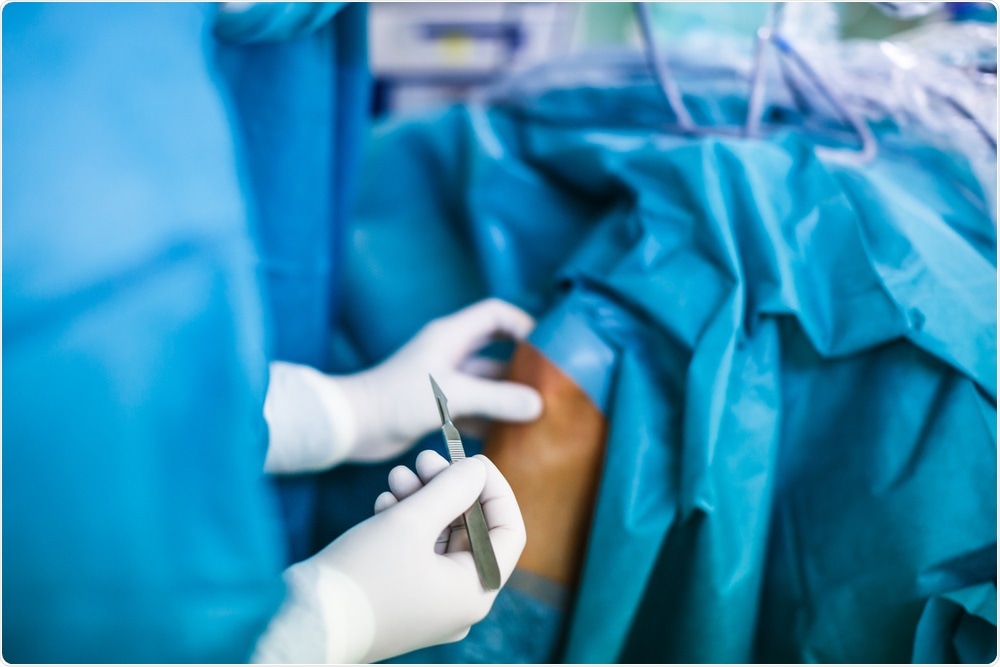
Delaying Knee Surgery has a Detrimental Impact on Health, a New Study Finds
Knee replacement: Life changing or a disappointment? - Harvard Health Blog - Harvard Health Publishing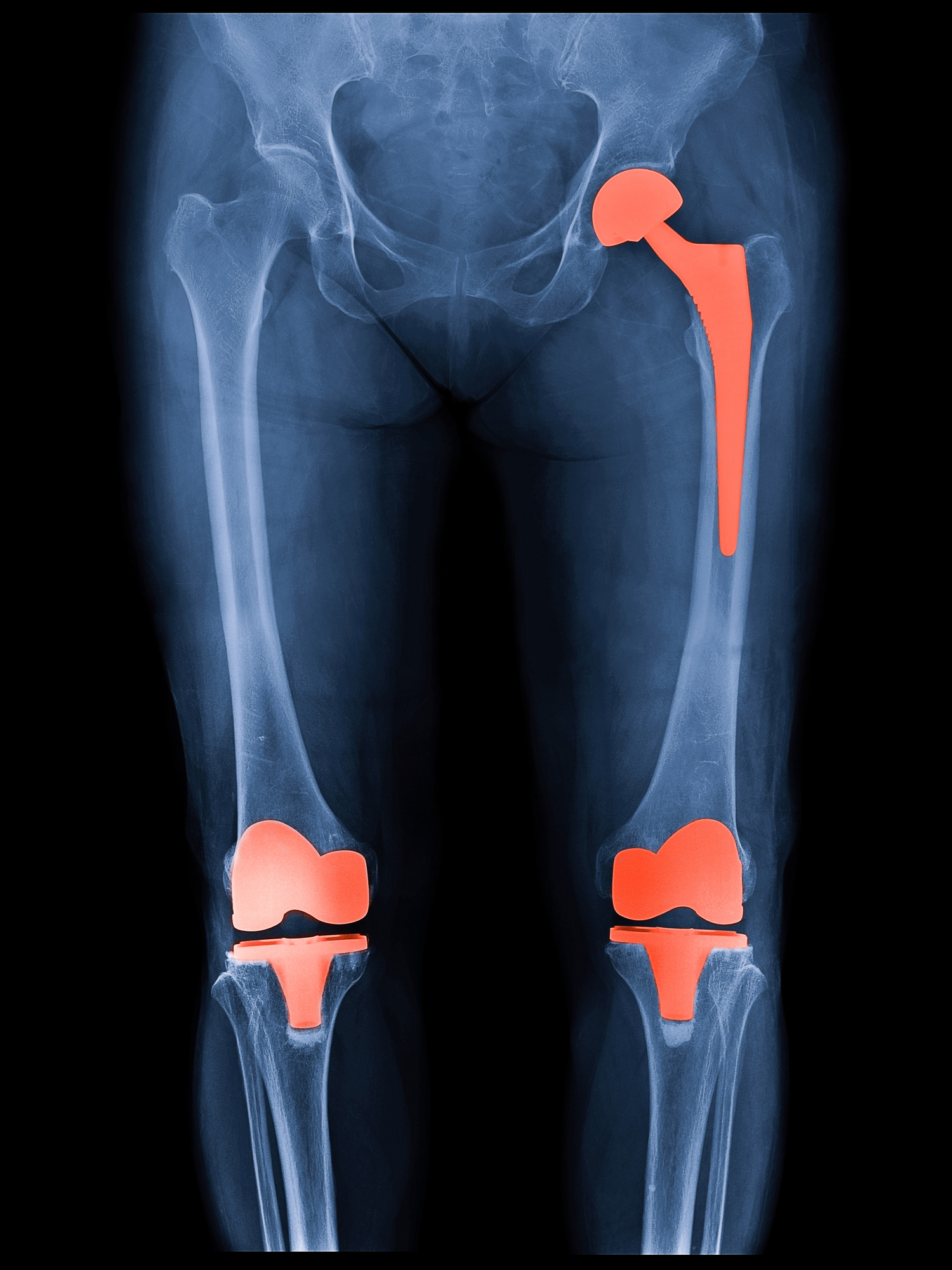
How long will my hip or knee replacement last? - Harvard Health Blog - Harvard Health Publishing
Pros and Cons of Total Knee Replacement Surgery - drramakant's blog in 2021 | Total knee replacement, Knee replacement surgery, Knee replacement
Why you should not delay Knee Replacement Surgery | Apollo Spectra/knee_replacement-d94685eb137b454484c8e819c61b4a51.jpg)
Knee Replacement Surgery: Overview
Knee replacement surgery: Cost, recovery time and pain
Knee replacement surgery: Cost, recovery time and pain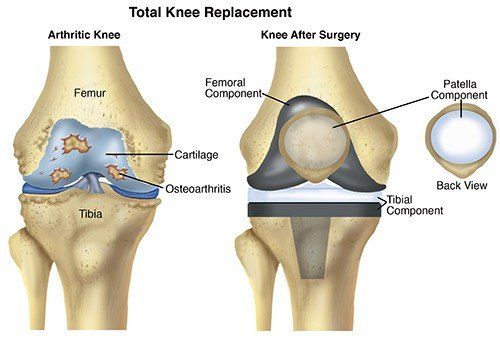
Physical Therapist's Guide to Total Knee Replacement (Arthroplasty):max_bytes(150000):strip_icc()/considering-hip-replacement-surgery-2549565-v11-3d3b7eafd288402d87af34c275996f26.png)
Hip Replacement Surgery: Things to Consider
58 Knee Replacement ideas | knee replacement, knee, knee replacement surgery
Is It Time For Joint Surgery? Here's How To Know | Prevention
Is it hard to decide about total knee replacement? Totally! - Harvard Health Blog - Harvard Health Publishing
Should You Have Both Knees Replaced at the Same Time? | Knee replacement recovery, Knee replacement, Knee surgery recovery
Knee replacement surgery: Cost, recovery time and pain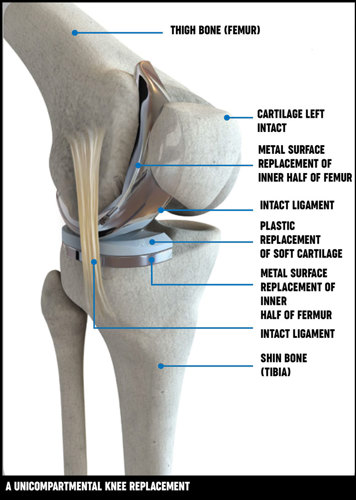
Knee replacement surgery | Treatment options | Versus Arthritis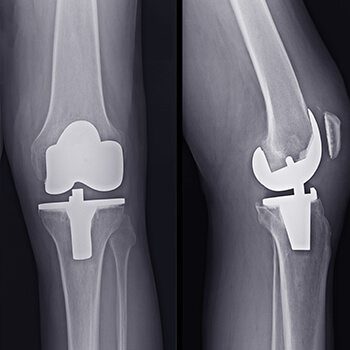
Knee Replacement Implant Types, Revision Surgery & Recalls.jpg)
When do you need a new knee? - Harvard Health
Best Knee Replacement Surgeon in Faridabad I Dr. Sujoy Bhattacharjee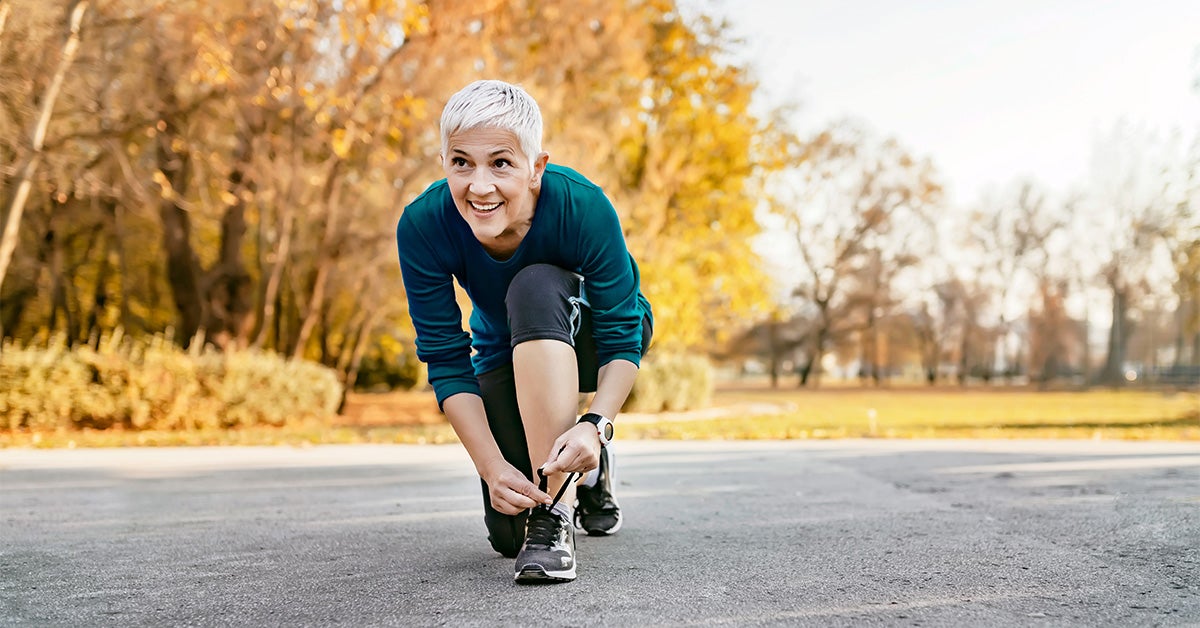
Don't Delay Your Knee Replacement
Knee pain treatment in Faridabad I Staple-less knee replacement surgery
Risks of not having a timely Knee Replacement | Narayana Health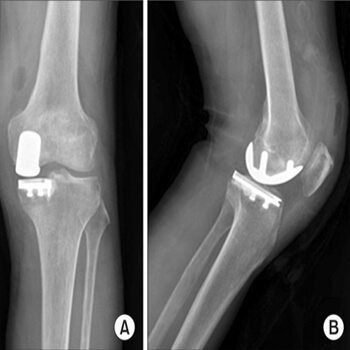
Knee Replacement Implant Types, Revision Surgery & Recalls
Patient education: Total knee replacement (Beyond the Basics) - UpToDate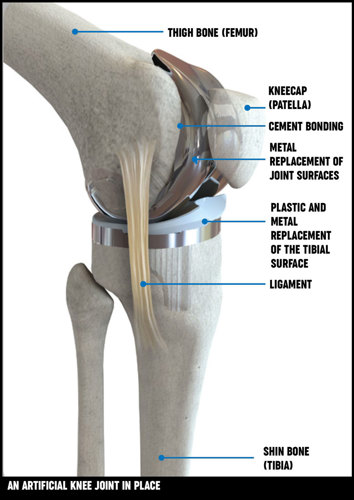
Knee replacement surgery | Treatment options | Versus Arthritis
Knee replacement surgery: Cost, recovery time and pain
58 Knee Replacement ideas | knee replacement, knee, knee replacement surgery
What are the dangers if Knee replacement Surgery is delayed नी-रिप्लेसमेंट में देरी से नुकसान - YouTube
advocatingfortheaging.com | Total knee replacement, Knee replacement surgery, Knee replacement exercises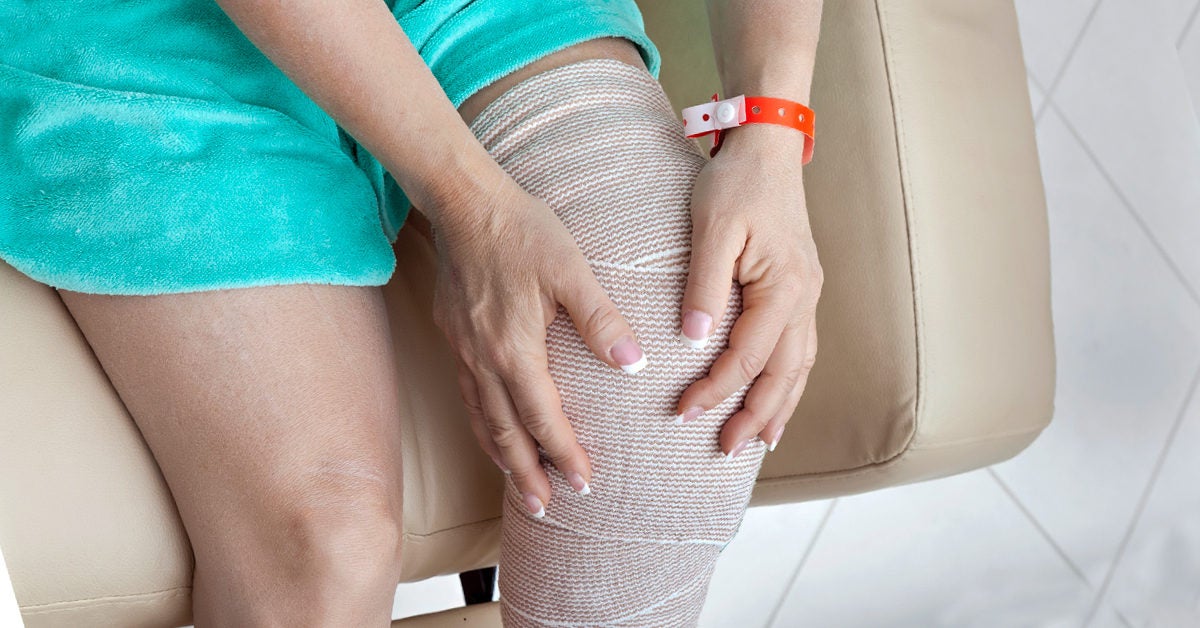
Considering Bilateral Knee Replacement?
Knee replacement: Don't get it too late or too early, study finds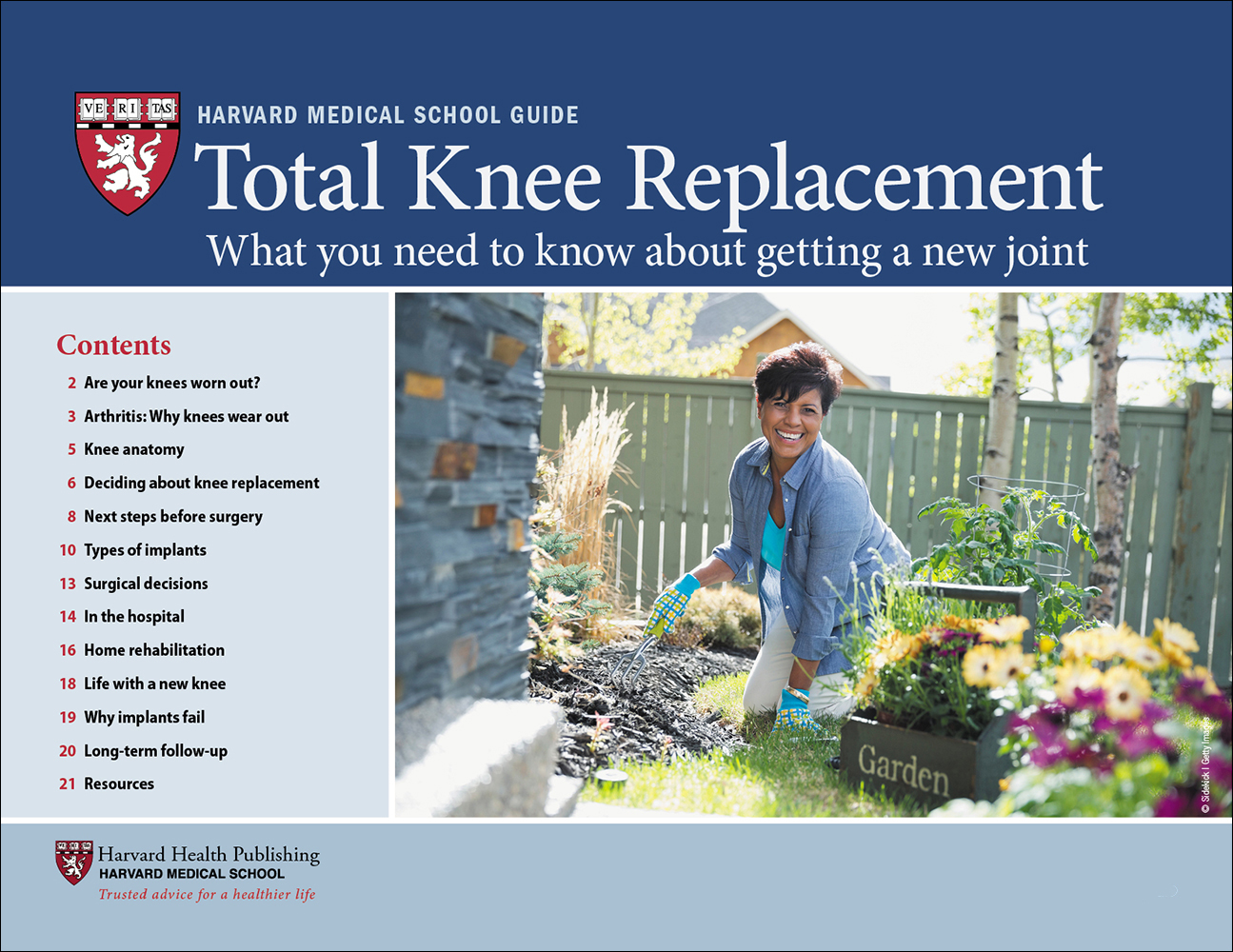
Total Knee Replacement - Harvard Health
Minimally-Invasive Surgery (MIS) Quadriceps-Sparing Total Knee Replacement | UW Orthopaedics and Sports Medicine, Seattle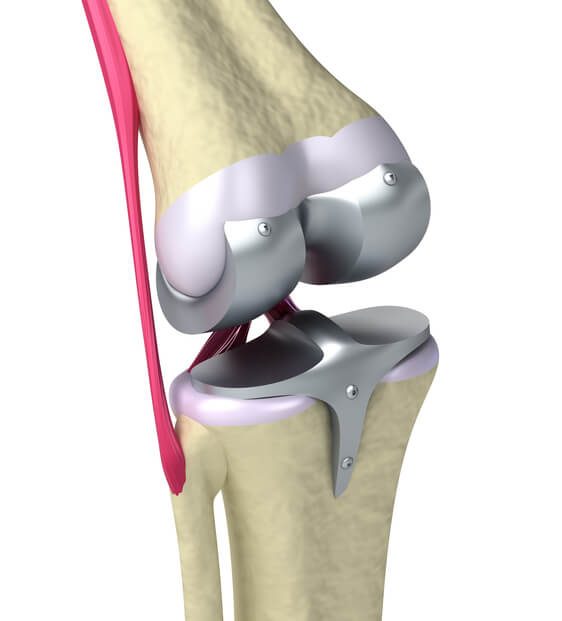
Knee Replacement Implant Types, Revision Surgery & Recalls
Dangers of Delaying Knee Replacement Surgery | Dr. Ramakant Kumar
 8 Dangers of Delaying Knee Replacement Surgery | Knee replacement, Knee replacement surgery, Knee replacement recovery
8 Dangers of Delaying Knee Replacement Surgery | Knee replacement, Knee replacement surgery, Knee replacement recovery









/knee_replacement-d94685eb137b454484c8e819c61b4a51.jpg)



:max_bytes(150000):strip_icc()/considering-hip-replacement-surgery-2549565-v11-3d3b7eafd288402d87af34c275996f26.png)







.jpg)















Komentar ini telah dihapus oleh pengarang.
BalasHapusGet advanced care with kidney stone treatment in chennai focused on accurate diagnosis and effective stone management. Experienced specialists use modern technology and minimally invasive procedures to ensure safe removal and pain relief. Patients receive personalized treatment plans, preventive guidance, and continuous follow up, helping achieve faster recovery, reduced complications, and long term kidney health with improved comfort.
BalasHapus